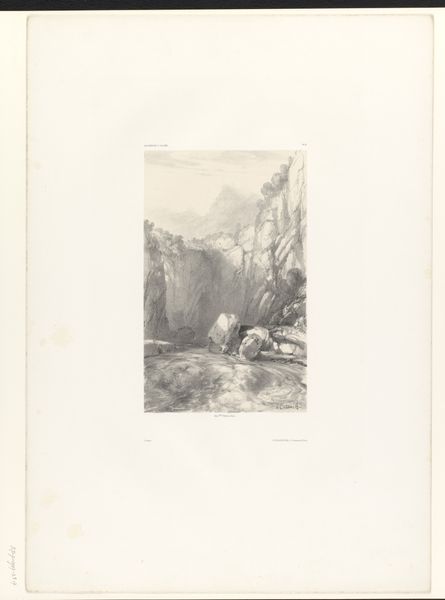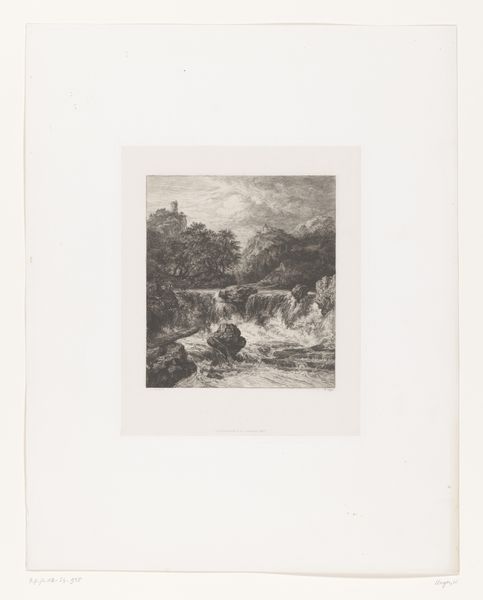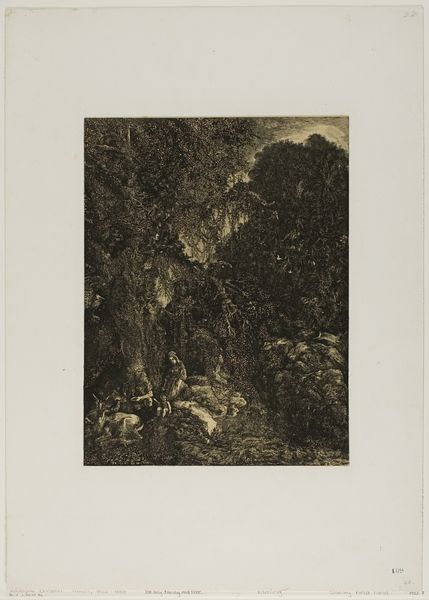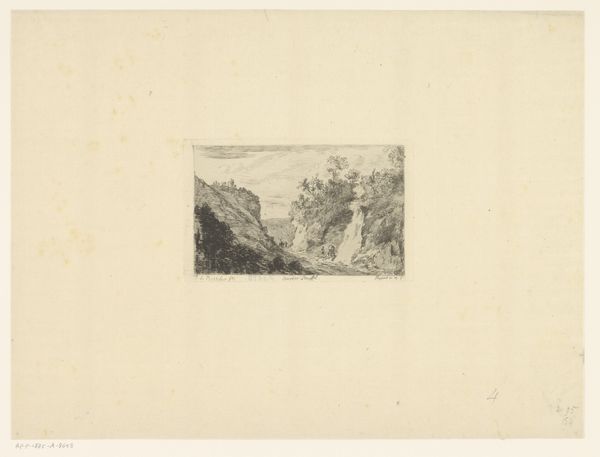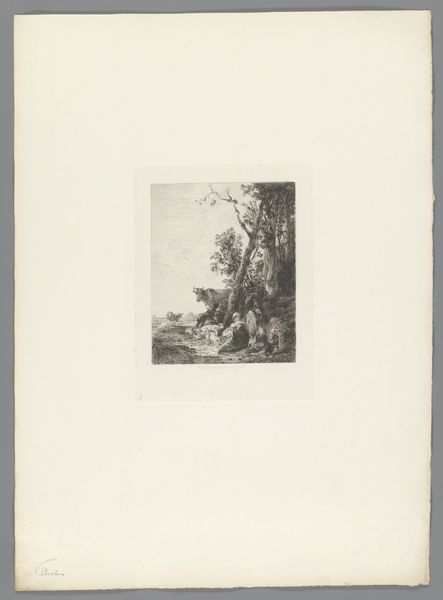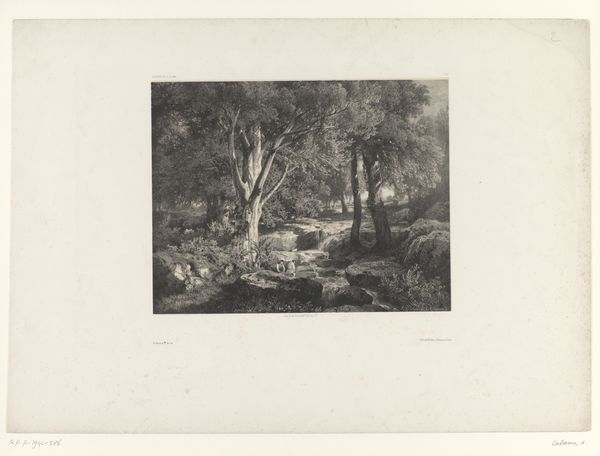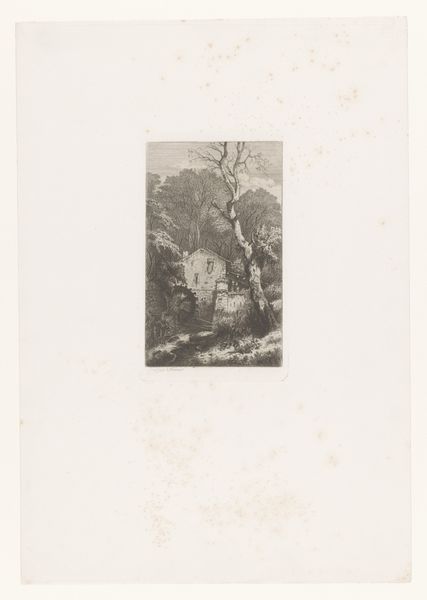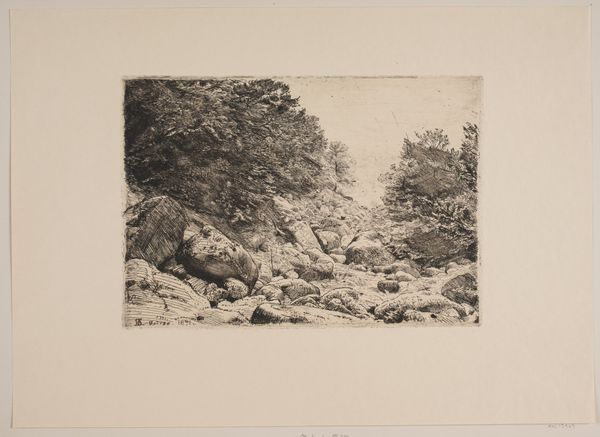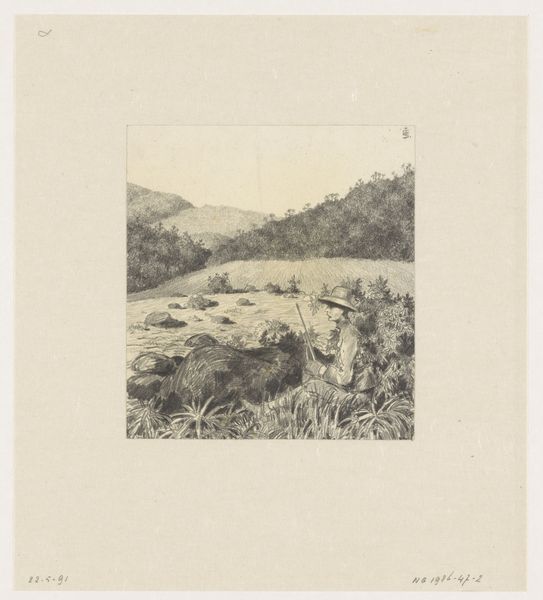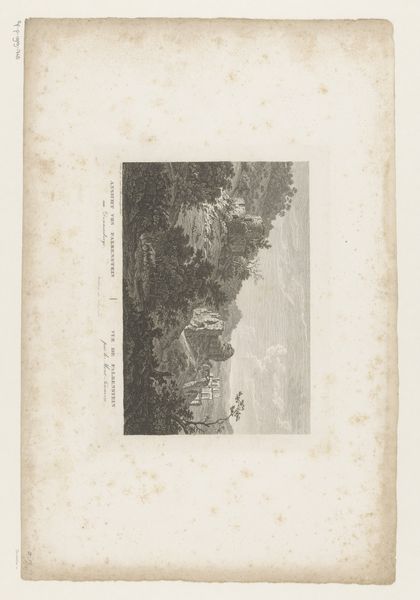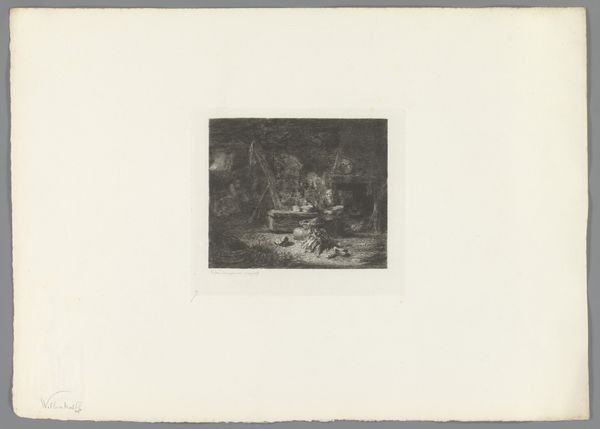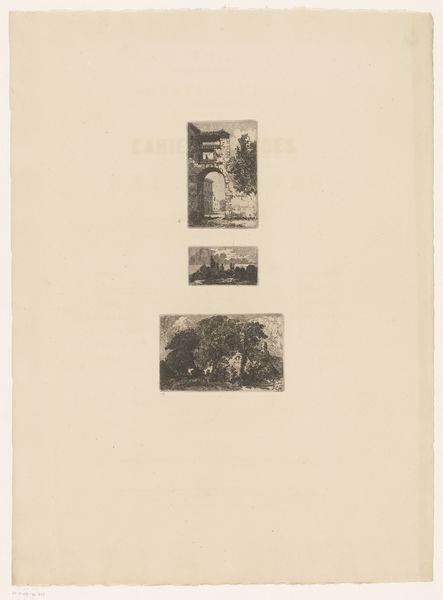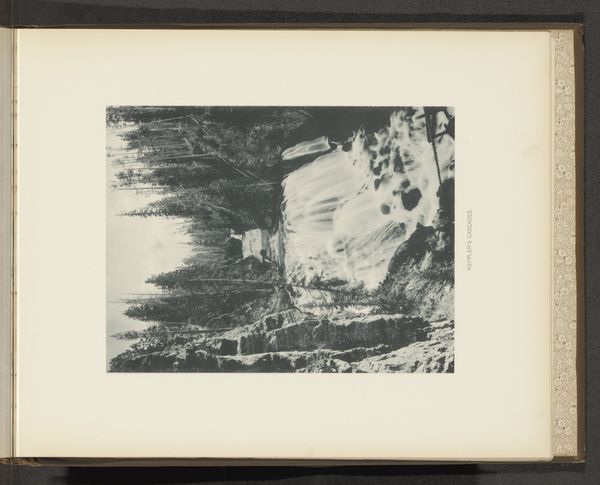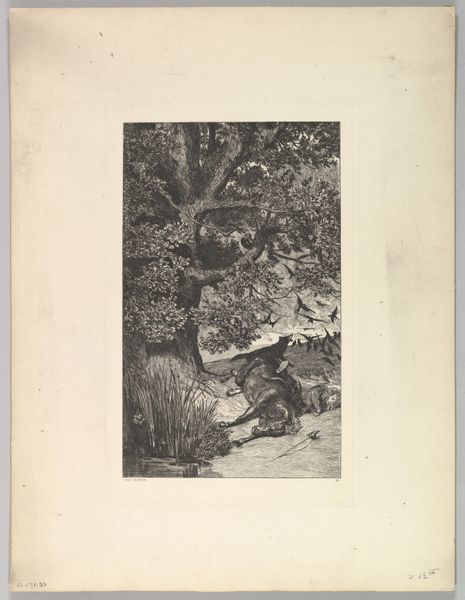![[Trees and Waterfalls] by Charles Nègre](/_next/image?url=https%3A%2F%2Fd2w8kbdekdi1gv.cloudfront.net%2FeyJidWNrZXQiOiAiYXJ0ZXJhLWltYWdlcy1idWNrZXQiLCAia2V5IjogImFydHdvcmtzLzNmZWMyMjFkLWNmMGMtNDM1My1iMWMzLTY2ZWU5YjRhZmI1OS8zZmVjMjIxZC1jZjBjLTQzNTMtYjFjMy02NmVlOWI0YWZiNTlfZnVsbC5qcGciLCAiZWRpdHMiOiB7InJlc2l6ZSI6IHsid2lkdGgiOiAxOTIwLCAiaGVpZ2h0IjogMTkyMCwgImZpdCI6ICJpbnNpZGUifX19&w=3840&q=75)
Dimensions: Image: 13.3 x 10; Mount: 18.9 x 15.6
Copyright: Public Domain
Curator: Right, let’s have a look at this captivating image, "[Trees and Waterfalls]." It’s a gelatin silver print created by Charles Nègre, probably sometime between 1860 and 1865. Editor: My first impression? It’s like stepping back in time but also plunging into the eternally churning heart of nature. The water seems to be alive, a blurry, white contrast against the dark, steadfast rocks. Curator: Nègre was part of a circle fascinated by capturing landscapes, aligning him with Romanticism's reverence for nature. He used photography not just to record but to almost idealize. He wasn't just taking pictures; he was composing visual poems about nature's grandeur and force. Editor: I feel that. There’s an almost painterly quality to the image. The way the water is blurred – you can practically hear it roaring, almost overwhelming in the confined space. Yet, it feels incredibly controlled for such a turbulent subject. Curator: Well, that's part of the skill and the technology of the time. Think of the wet collodion process – it demands a different kind of looking, and a slower, deliberate capture. This slower process, requiring long exposure, translated water into something ethereal and gauzy. Editor: Right, a slow reveal of something dynamic and ephemeral. Considering the rapid urbanization happening then, I wonder if this image was Nègre's rebellion, his argument for remembering the power of natural spaces? Curator: That's astute. These images served as vital records, documenting places vulnerable to industrial expansion. Romanticism, especially in art, did more than present pretty scenery; it preserved something. It invited audiences to reflect on environmental transformation. Editor: Knowing that history enriches the work with deeper intention and offers the photograph renewed relevance in today’s climate. Seeing "Trees and Waterfalls" not just as art but an ancestor, quietly suggesting the balance we desperately need. Curator: Precisely. Art from the past constantly urges reflection and maybe even actions that could reshape how we look at both landscapes and our cultural values. Editor: Well, this picture will leave me pondering and appreciating the roaring stillness contained within it. Curator: Indeed. Perhaps we can think of it as Nègre's visual haiku, celebrating and mourning the raw power of nature all at once.
Comments
No comments
Be the first to comment and join the conversation on the ultimate creative platform.
